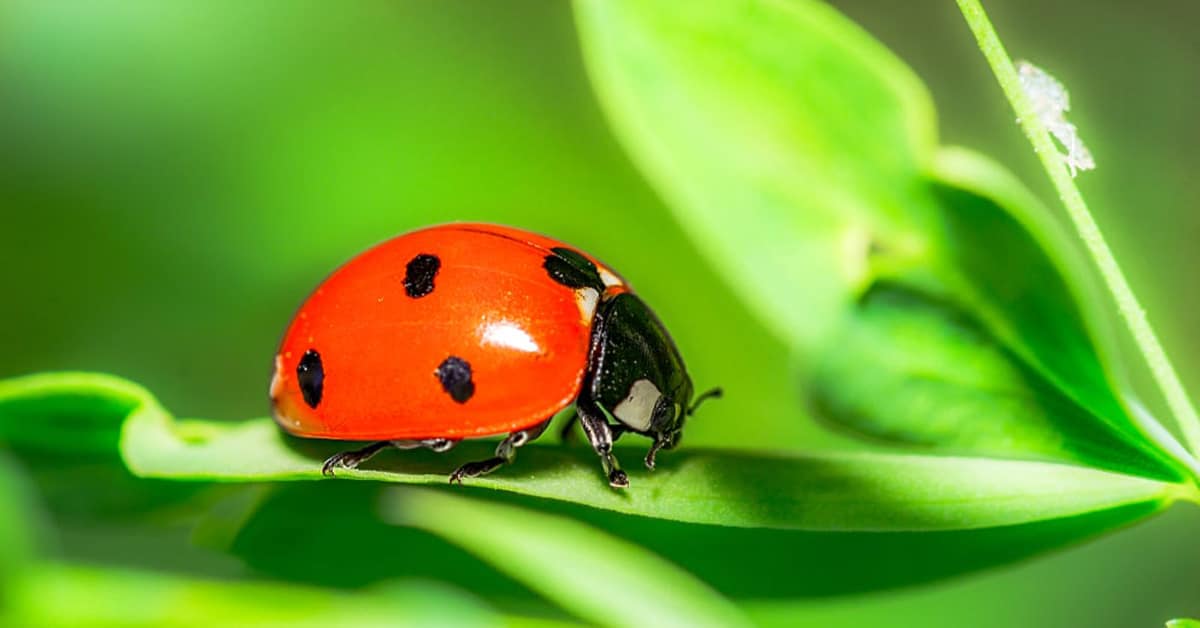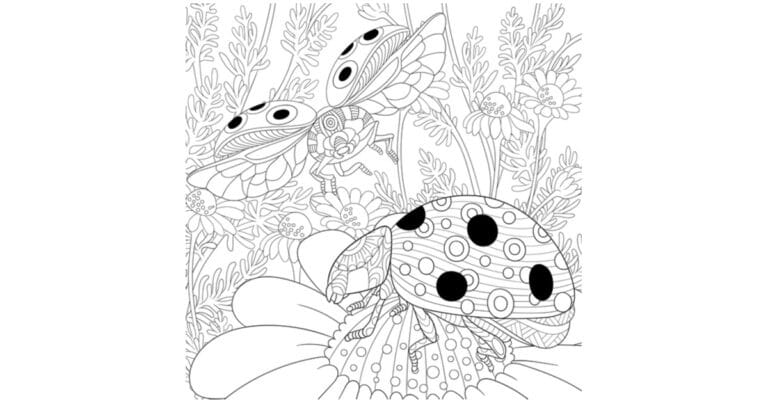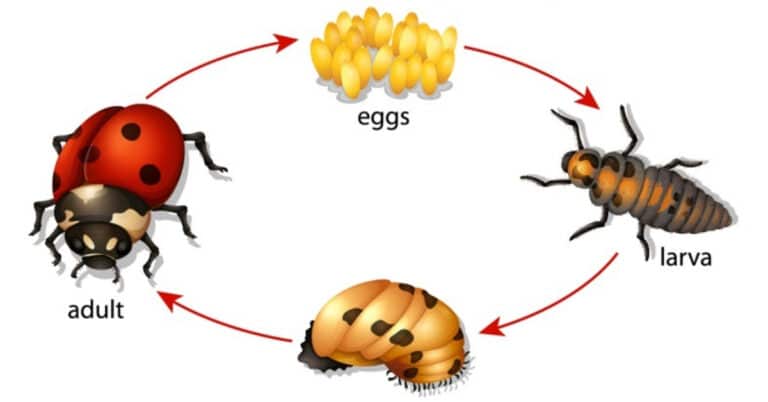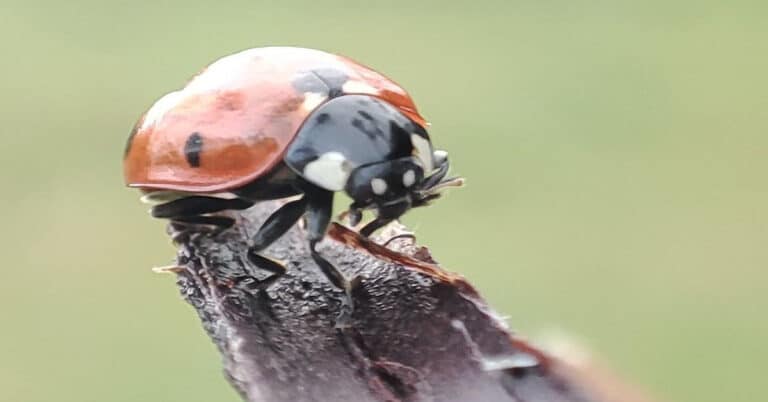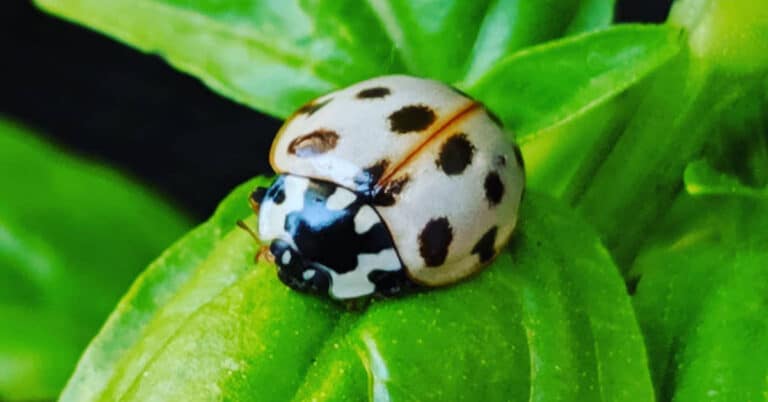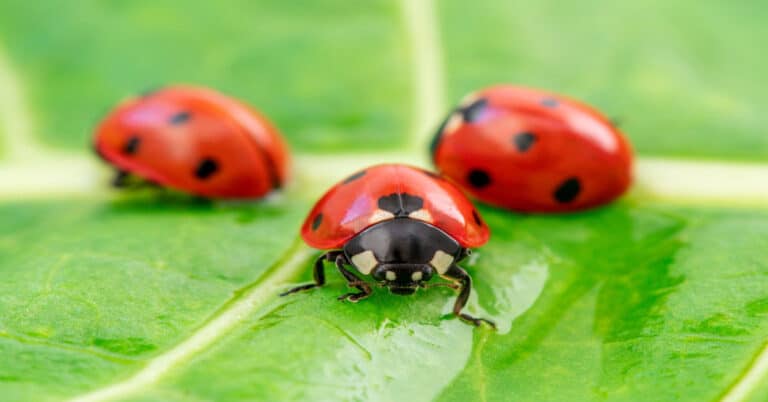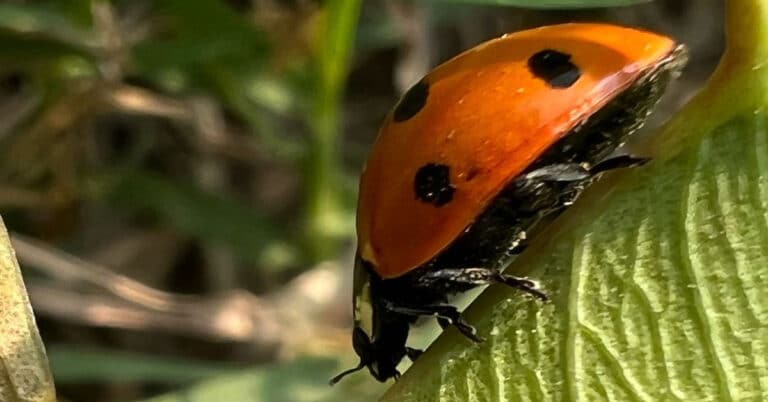Red Ladybug
There are about 5,000 different species of ladybugs in the world. These much-loved critters are also known as lady beetles or ladybird beetles.
They come in many different colors and patterns, but the most familiar in North America is the seven-spotted ladybug, with its shiny, red-and-black body. In many cultures, ladybugs are considered good luck.
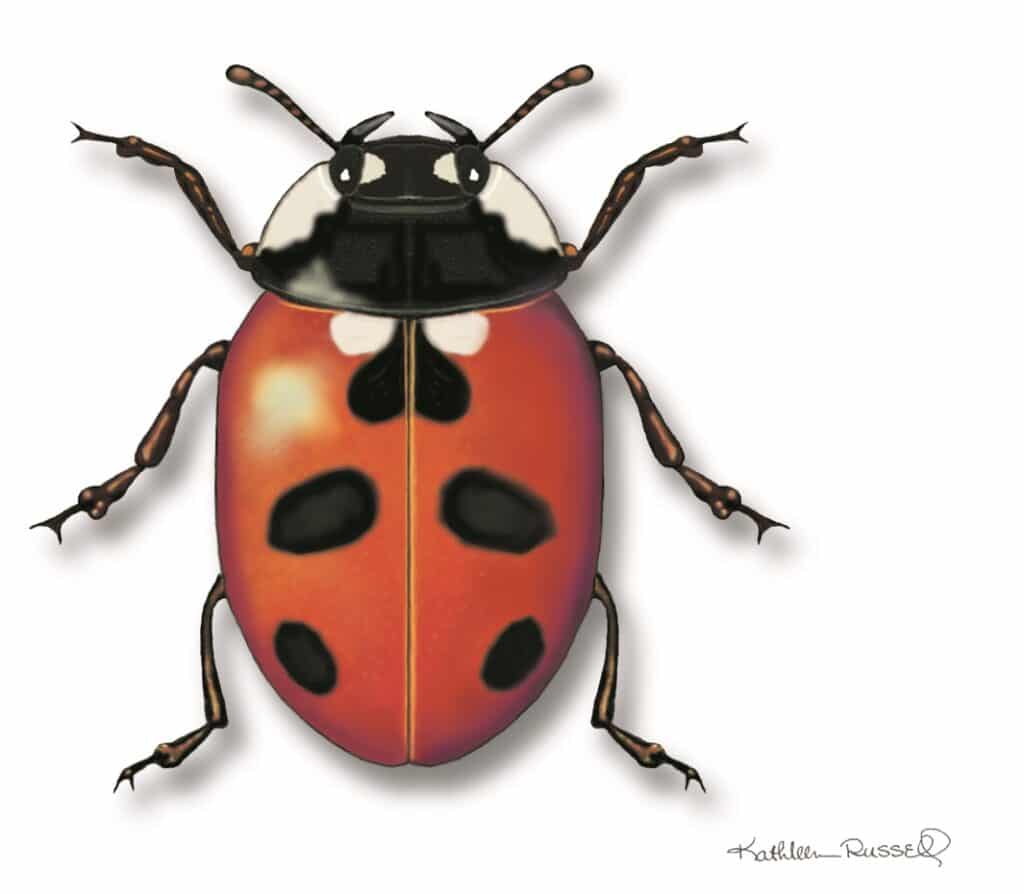
Why Are Ladybugs Red?
Red ladybugs are insects that have oval shapes and dome-like bodies. They have 6 legs and spots. The number of spots can vary in different species, but generally, it is seven.
A study conducted at the University of Exeter proves that a ladybug’s hues can tell you how hazardous it is. More poisons are present in brighter ladybugs than in paler insects. Scientists have also discovered that early in their lives, ladybugs with more vibrant colors had better nutrition.
The black spots we see on ladybugs are natural adaptations to survive and avoid predators. The spots on a red ladybug warn predators. Aposematic coloring is the term for this combination of black and red.
Not just ladybugs but other insects also utilize aposematic colors to deter predators. Almost every bug that is black and red or orange is telling predators that they may be poisonous and may taste bad. The monarch butterfly is probably the most well-known example of a creature with aposematic colors. The ladybug’s brilliant use of color extends even to its markings.
Ladybugs create alkaloids, poisonous substances that repel hungry spiders, ants, and other predators from eating them. A strange reaction called “reflex bleeding,“ occurs when ladybugs release tiny hemolymph droplets. The liquid is released from the leg joint. This happens once the red butterfly feels threatened. Another signal to the predator is the unpleasant smell the blood’s alkaloids emit.
The red ladybug’s color not only indicates its toxicity but also gives signals to birds. The brighter the ladybug is, the less likely birds to attack it.
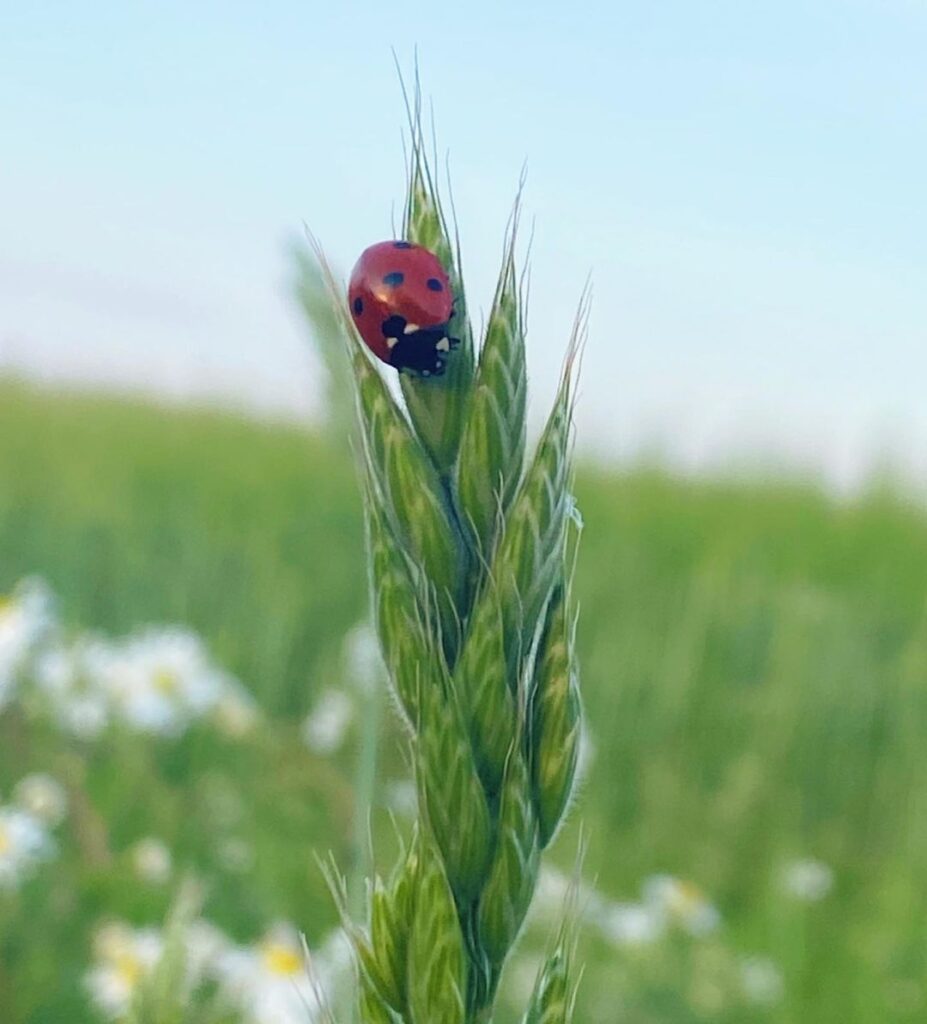
Where Do Red Ladybugs Live?
Ladybugs thrive in various environments, such as meadows, woodlands, cities, suburbs, and areas near rivers. Although native to Europe, seven-spotted ladybugs were introduced to the continent of North America in the middle of the 20th century to manage aphid numbers.
Spring through September is when ladybugs are most active. They seek out a warm, isolated location to hibernate when the weather becomes cold, such as behind decaying logs, beneath rocks, or even within buildings. There may be thousands of red ladybugs living in these hibernation colonies. This aids in resource conservation and facilitates the union of men and females for sexual reproduction.
What Eats Red Ladybugs?
Ladybugs indeed have predators, even though they have lovely protecting gear. This may be because the predator is immune to the poisons. Additionally, it may also be because of evolution. Through time, some predators have developed the ability to cope with the otherwise deadly toxic effects that other species would succumb to.
One of the major predators of red ladybugs is birds. Some of the most observed species include:
- Swift
- Martins
- Crows
- Swallows
- Bluebirds
- Mockingbirds
- Martins
In addition to eating various insects, tree frogs are widely renowned for consuming red ladybugs. Given that they view ladybugs as small food and swiftly swallow captured ladybugs whole, this is a fairly simple task.
A ladybug is a simple and quick lunch for anole lizards. Those ones typically consume larger bugs, but if the chance occurs, they will eat red ladybugs with pleasure.
In fact, eating red ladybugs is a common practice among dragonflies. Since dragonflies eat while flying, they are frequently photographed in midair.
Robber flies also catch and consume insects, and they are also observed to consume red ladybugs.
Even though the research about this topic is still in progress, ladybug consumption by praying mantises has been observed and documented. The ladybug is turned upside down by them using their front legs. However, some of them may not like the unpleasant, poisonous flavor.
Because they can push their proboscis into a red ladybug’s body and retrieve the insides, assassin bugs can devour ladybugs in most cases. It seems disgusting, yet it is how assassin bugs consume their victims.
Lastly, one more insect that eats red ladybugs is an ant. A single ant can do no harm to the ladybugs alone, obviously. However, the group of ants has been observed to attack and assault the red ladybug.
Red Ladybug Life Cycle
The red ladybug’s life cycle has 4 stages, which start with an egg, then larvae, then pupa, and finally adulthood. So, let’s start with the egg stage.
Egg
A female ladybug deposits a clutch of five to thirty eggs after mating. Aphids are a favored meal for newly emerged insects. Thus the mother typically places the eggs on vegetation that has sufficient prey for her young to consume when they hatch. One red ladybug may lay more than 1,000 eggs over the course of a three-month period beginning in the spring or early summer.
The cluster is thought by scientists to include both viable and sterile eggs. The freshly developed larvae will eat the infertile eggs when aphids are scarce.
Larvae
The larvae of red ladybugs hatch from their eggs in two to ten days. This timescale might be shortened or extended depending on the species and environmental factors like temperature. Red ladybug larvae have elongated bodies and rough exoskeletons, giving them that appearance. The larvae of several species of ladybug are black with vividly colored bands or dots.
Ladybug larvae eat a lot at this stage of development. A single larva may eat 350-400 aphids in this stage. The larvae stage typically lasts for 2 weeks. During this stage, ladybugs also consume adelgids, scale insects, insect eggs, mites, and other soft-bodied plant pests. Red ladybug larvae are typically not picky eaters and occasionally devour ladybug eggs.
The larvae stage starts to molt as it grows. It eats up to the point at which it outgrows its shell. Larvae are in their second instar after molting. Typically, red ladybug larvae have four instars of molting. As it prepares to pupate or transform into its adult form, the larva attaches itself to the foliage of specific vegetation.
Pupal Stage
The red ladybug’s color in the pupal stage can vary, but it already has the black markings developed. The pupa of the red ladybug is still fastened to a leaf. Histoblasts, a unique type of cell, control the astonishing metamorphosis of the ladybug’s body.
They have control over a biochemical mechanism that disassembles the larval body and reconstructs the insect for the adult stage. The pupal stage continues for 15 days.
Adult Red Ladybug
Imagos, or newly emerging adults, have delicate exoskeletons that make them prey targets until their cuticles stiffen. When they first emerge, they are light and yellow, but they quickly take on the rich, vivid, red colors that make ladybugs famous.
Like their larvae, adult ladybugs eat soft-bodied insects for food. Adults spend the winter hibernating most frequently in groups. Soon after returning to activity in the spring, they start mating, and the life cycle starts all over again.
Ladybugs may live off their stored energy for 9 months. When the temperature warms up and hits 55 degrees Fahrenheit, they come out of the hibernation phase. Food normally starts to become accessible again at this point.
Red Ladybug Symbolism
Ladybugs represent happiness. These tiny red bugs are frequently equated with luck, joy, and cuteness. In gardens across the world, you may find the distinctive black-spotted ladybug amid the plants and flowers. The ladybug’s positive reputation may be partly attributable to the beneficial function of these insects. Due to their propensity to hunt out and consume the smaller insects that harm plants, ladybugs are gardeners’ best buddies.
Red ladybugs are typically connected with luck and joyful things to come. These charming tiny critters are associated with sweetness and innocence. Red ladybugs do not have the crimson form at birth, unlike butterflies. However, similar to them, ladybugs also represent transformation. They are hatched from the eggs and emerge as black larvae. Then those creatures go through the transformation and turn into beautiful red ladybugs with distinctive black spots.
The ladybug is sometimes associated with desires and wishes. The red ladybug is believed to fulfill the person’s wishes. If you come across ladybugs, put them on your palm and slowly blow them. It will open its wings and fly away.
The ladybug has represented fortune for many years. Folklore in Europe states that if a red ladybug touched you, it would grant your heart’s desire. The ladybug is seen as bringing harmony and good fortune and is often connected with it in China.
The ladybug’s vivid red exterior has been utilized throughout history in various civilizations as a symbol of love. Some argue that this relationship stems from the ladybug’s reputation for inducing a dreamy state, as shown by its mellow, melodious flying patterns.
Whatever the meanings attached to this adorable beetle, it is undeniable that it has a long-standing, enduring link with love. The dreamlike aspect has captivated us for years, whether we are small children observing their glittering crimson shells or older people wanting to deepen our ties with loved ones.
Bottom Line
Red ladybugs are one of the most widespread ladybug species found all around the world. They come with distinguishing black spots. Scientists believe that the color and markings play a significant role in warning off predators. Red ladybugs are beautiful and play a significant role in balancing the ecosystem.

Having discovered a fondness for insects while pursuing her degree in Biology, Randi Jones was quite bugged to know that people usually dismissed these little creatures as “creepy-crawlies”.

